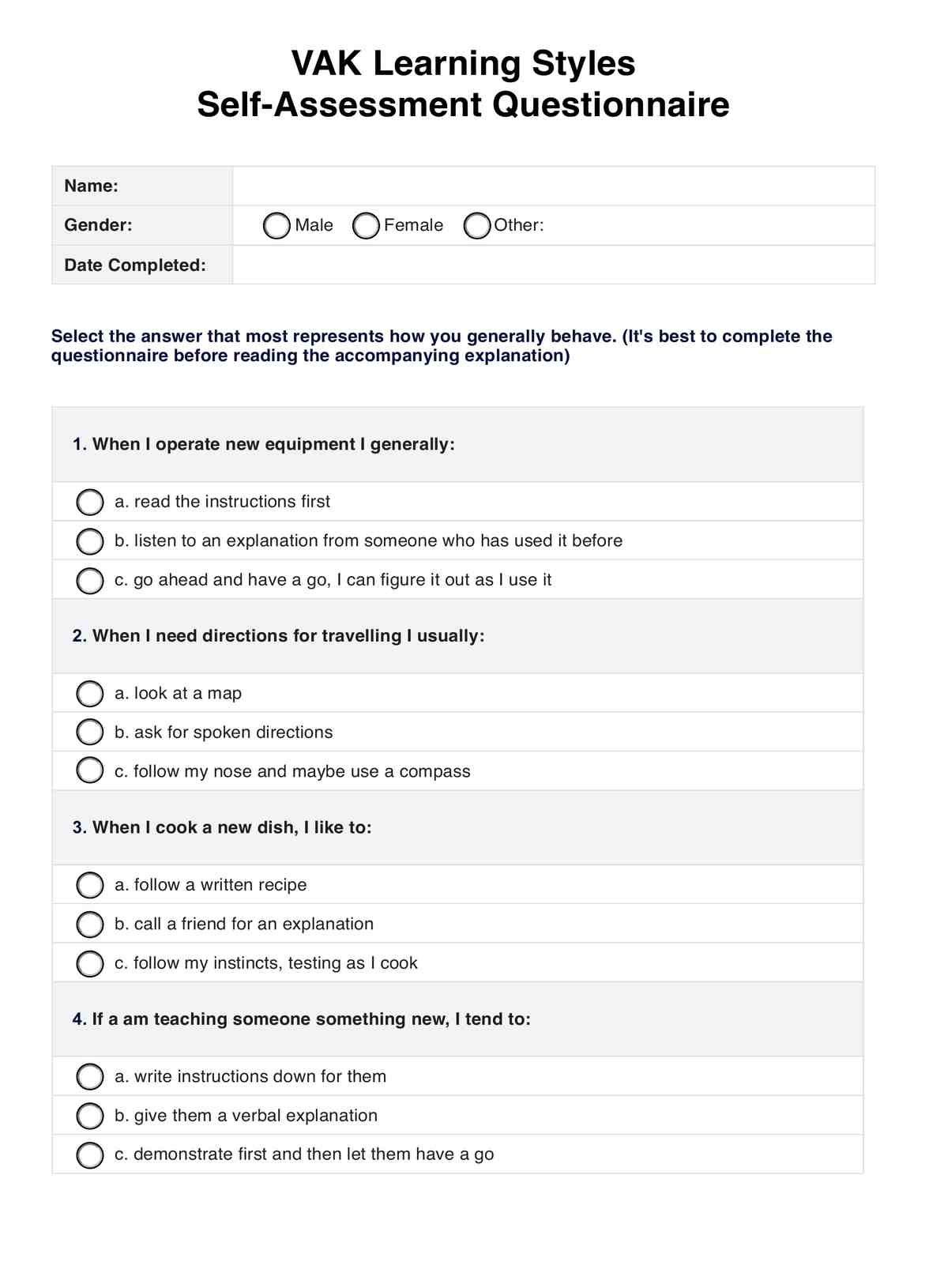VAK learning styles refer to the Visual, Auditory, and Kinesthetic modalities through which individuals prefer to absorb and process information.

VAK Test
Discover your preferred learning style with the VAK Test. Understand how you remember things best in different ways. Get relevant insights now.
Use Template
VAK Test Template
Commonly asked questions
You can determine your dominant learning style by taking a VAK assessment test, which typically involves answering questions or scenarios that assess your preferences in learning situations.
Learning styles benefit individuals, educators, and trainers alike, enabling personalized approaches to teaching and learning, leading to enhanced comprehension and engagement.
EHR and practice management software
Get started for free
*No credit card required
Free
$0/usd
Unlimited clients
Telehealth
1GB of storage
Client portal text
Automated billing and online payments











